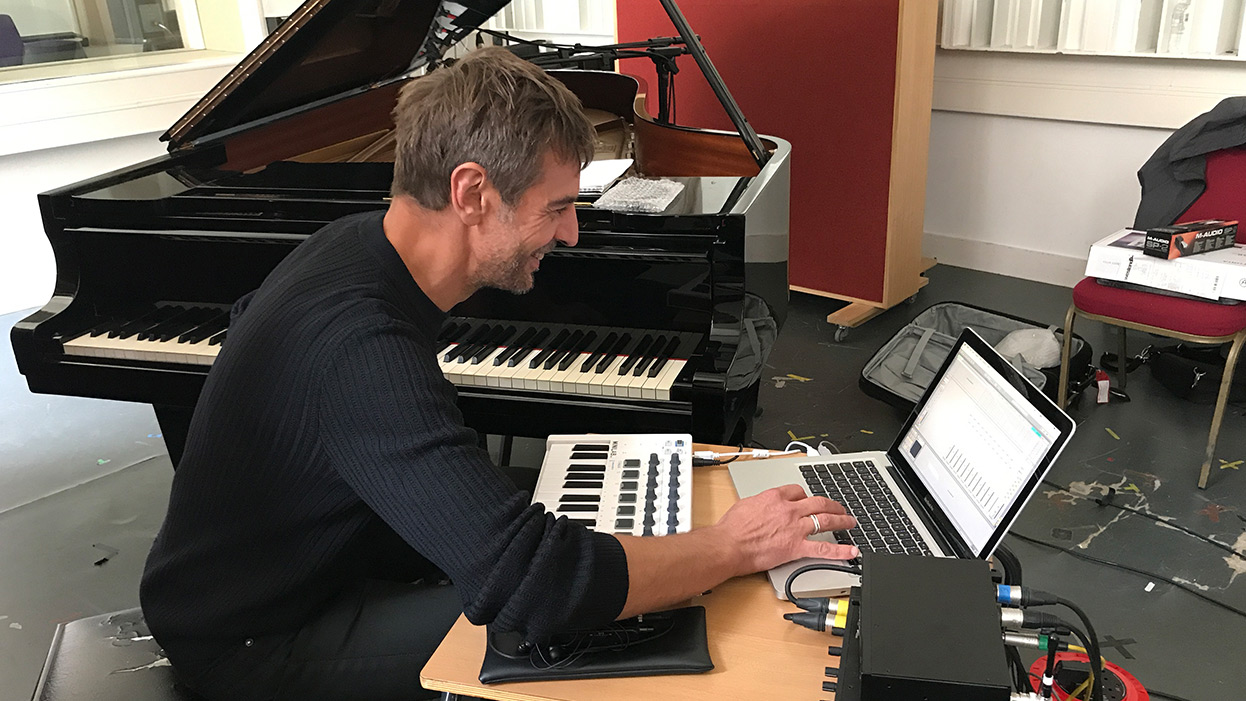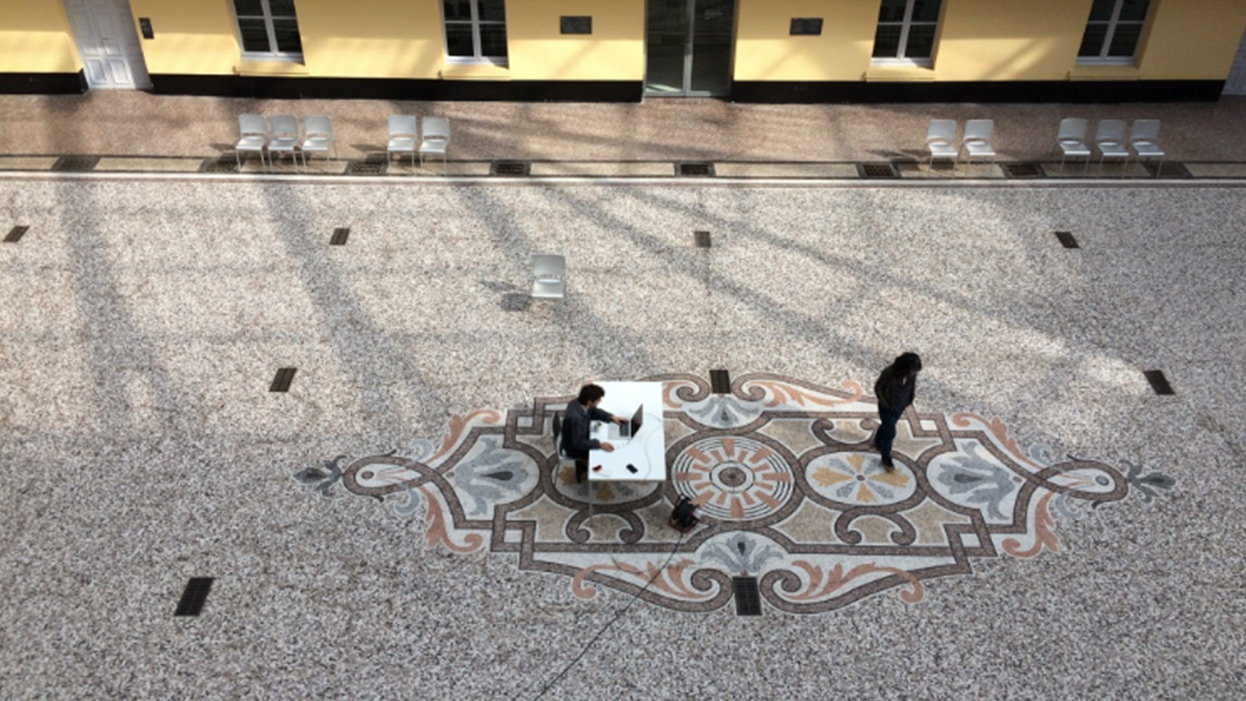Manuel Poletti
Sound Designer
whiting flowre for piano and software technologies (2017) is written by Will Dutta.
Bloume for piano and software technologies (2017) is written by Will Dutta.
Manuel Poletti uses Ableton Live 9 Suite to build a variety of tools controlled by a master instrument.
MP: ‘The instrument extends the natural timbre of the piano through relatively classical effects in a dynamic and organic fashion, giving the electronics its own life. Instead of applying one effect to one sound event rather we think
of the live electronics as a matrix of available timbral deviations and the control sweeps across the matrix (the dynamic) with freedom in the selection of the effects. At any time, what you get is a mix of effects and it is always different (the organic). The composer
can control the amount of dynamic movement and the makeup of the mix.’
List of tools and their effects:
A – Delays / ‘Echo’: Three bands (low, mid, high) of filter delay where each band moves within its own settings. The result is a constantly changing echo effect.
B – FFT Filters / ‘Bells’: Sound is filtered by interpolating arrays of moving frequencies. The filtered sound is rhythmically delayed and returned into the filters. The result is a constantly moving colour of harmonics.
C – Resonators / ‘Reson’: The main harmony is entered as a set of resonant frequencies. When the instrument plays those frequencies the resonance occurs in a sympathetic fashion.
D – Spectral Delay / ‘Cymbals’: The main harmony is entered as a set of frequencies. These are given a number of harmonics that form a spectrum. This is used to delay each frequency band separately and can be stretched or shifted to give multiple echoed colours
that evolve over time.
E – Frequency Shift / ‘Metal’: By shifting the whole spectrum of sound, all harmonic material becomes inharmonic resulting in a metal-like resonance of the piano. Sound is also shifted in time using a semi-random delay.
F – Granulator / ‘Cloud’: Sound is recorded and played back using a number of sample players. Each player outputs a grain of sound, which can be selected from +/- range of time in the recording. The shape of the grain (envelope), or its gain, pitch or stereo
position can vary. This combination creates a cloudy sound texture.
G – Inharm / ‘Inharm’: Similar to ‘E’ but in the spectral domain: only certain frequency bands are shifted. The result is a conflict between harmonic and inharmonic sound.
H – Harm / ‘Octave’: A spectral transposer set to -1 octave in order to reinforce the low-end of the spectrum of electronics.
I – Reverb / ‘Room’: An IRCAM Spat reverberator that includes FFT Filter at its input in order to add colour to the room effect.
www.musicunit.fr




